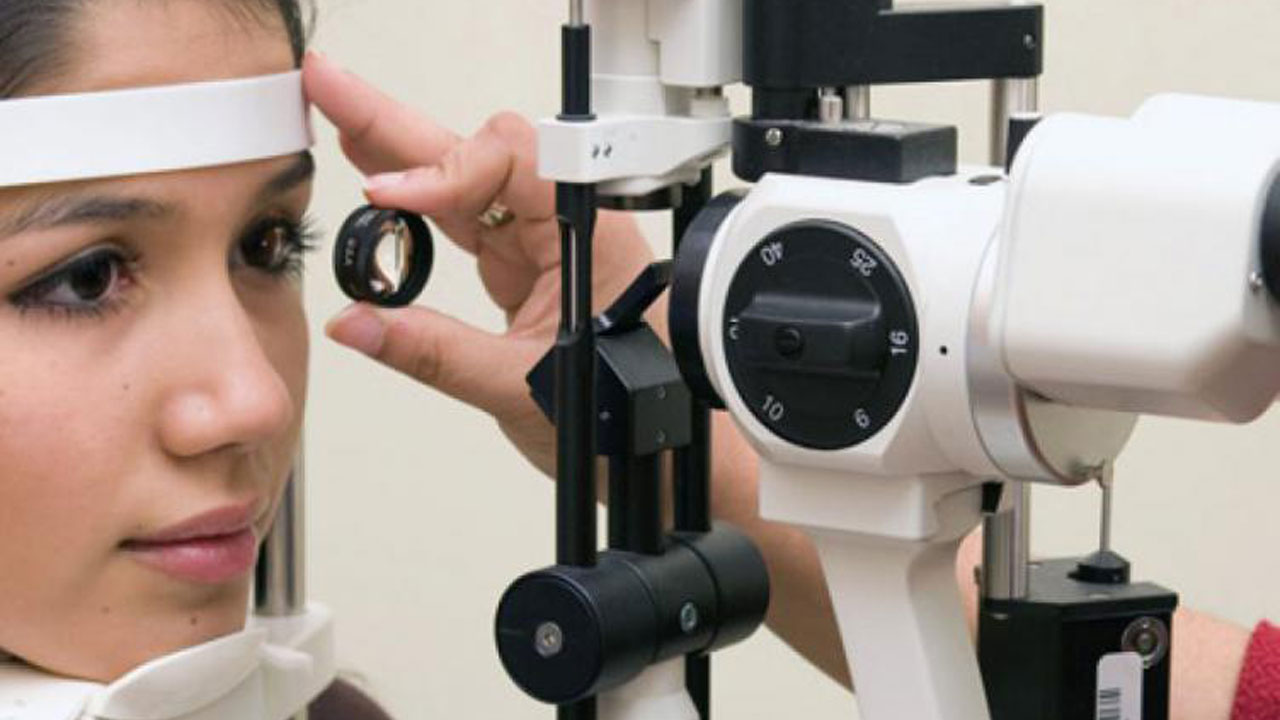- Contact: +91-9270109498 | 020 24352449
- Email: kuldeepdole@yahoo.co.in

Basic Eye Check Up in Pune
Importance of Eye Check-up
Regular eye check-ups are essential for maintaining good eye health and detecting potential problems early. Eye exams help correct vision issues like nearsightedness, farsightedness, or astigmatism, ensuring clear vision for daily activities
These check-ups also detect eye conditions such as cataracts, glaucoma, macular degeneration, diabetic retinopathy, and retinal detachment. Early detection and treatment increase the chances of preserving vision and preventing further damage.
Visit Dole Eye Hospital if you have specific eye conditions or needs. The Hospital is conveniently located in Pune and offers essential eye check-ups.
Common Eye Conditions
Common eye conditions detected during an eye check-up:
- 1. Refractive errors:nearsightedness, farsightedness, and astigmatism.
- 2. Cataracts:clouding of the eye's lens causing blurred vision.
- 3. Glaucoma:increased eye pressure leading to optic nerve damage and potential vision loss.
- 4. Macular degeneration:deterioration of central vision, potentially resulting in permanent vision loss.
- 5. Diabetic retinopathy: damage to retinal blood vessels due to diabetes, leading to vision impairment or blindness.
Basic eye check-up process
The basic eye check-up process typically involves several steps to assess your vision and overall eye health. Here's a general overview of what you can expect during a routine eye examination:
- 1. Case History:The eye doctor will ask about your medical history, current eye-related issues or symptoms, and any family history of eye conditions.
- 2. Visual Acuity Test:This test measures your ability to see clearly at various distances. You'll be asked to read letters or symbols on an eye chart, usually from a specific distance. This helps determine if you need corrective lenses and assesses the sharpness of your vision.
- 3. Refraction Assessment:If your visual acuity test indicates a need for corrective lenses, the eye doctor will perform a refraction assessment. This involves using a phoropter, a device with different lenses, to determine the lens power that provides the clearest vision for you.
- 4. Eye Muscle Movement Test:This test evaluates the coordination and alignment of your eye muscles. You'll be asked to follow an object, such as a pen or light, with your eyes as it moves in different directions.
- 5. Slit Lamp Examination:A slit lamp is a specialized microscope that allows the eye doctor to examine the front structures of your eye, including the cornea, iris, and lens. This helps detect any abnormalities or signs of eye conditions.
- 6. Intraocular Pressure Measurement:This test, often performed using a tonometer device, measures the pressure inside your eyes. High intraocular pressure can indicate glaucoma, leading to vision loss if left untreated.
- 7. Dilated Eye Examination:A dilated eye exam involves using eye drops that dilate your pupils, allowing the eye doctor to have a wider view of the internal structures of your eyes. This enables a thorough examination of the retina, optic nerve, and blood vessels.
- 8. Additional Tests:Depending on your circumstances and any specific concerns, the eye doctor may conduct additional tests, such as visual field testing, color vision testing, or optical coherence tomography (OCT), to assess the retina in more detail.
Importance of Dilated Eye Examination:
A dilated eye examination is crucial because it allows the eye doctor to thoroughly evaluate the health of your eyes, particularly the retina and optic nerve.
By dilating the pupils, the eye doctor can see a larger area of the retina and detect signs of various eye conditions or diseases, including:
- 1. Diabetic Retinopathy:A condition that affects the blood vessels in the retina, often associated with diabetes.
- 2. Age-Related Macular Degeneration (AMD):A progressive deterioration of the macula, which can lead to central vision loss.
- 3. Glaucoma:A group of eye diseases characterized by damage to the optic nerve, often associated with elevated intraocular pressure.
- 4. Retinal Detachment:A condition where the retina becomes separated from the underlying tissue, requiring immediate medical attention.
- 5. Retinal Tears or Holes:If left untreated, these can lead to retinal detachment.
Detecting these conditions early through a dilated eye examination can initiate prompt treatment and management, potentially preventing vision loss or minimizing its impact.
Understanding Eyeglass and Contact Lens Prescription:
After completing the necessary tests, if your visual acuity assessment indicates the need for vision correction, the eye doctor will provide you with an eyeglass or contact lens prescription. Here are the key elements and their meanings.
Your eyeglass or contact lens prescription will be specific to your visual needs, and it's essential to have it filled accurately by a qualified optician or eye care professional to optimize your vision correction.
Frequently Asked Questions (FAQs)
Q:1 How often should I get an eye check-up
Getting an eye check-up at least once every two years is recommended or as advised by your eye care professional.
Q:2 Can I drive after an eye check-up with dilated pupils?
It is not recommended to drive immediately after an eye check-up with dilated pupils, as it can affect your vision and driving ability.
Q:3 Are eye exams painful?
No, eye exams are generally not painful, although some discomfort or sensitivity to light may be experienced during certain tests.
Q:4 Can I wear contact lenses during an eye check-up?
It is generally advised to remove contact lenses before an eye check-up, as they can interfere with the accuracy of the examination.
